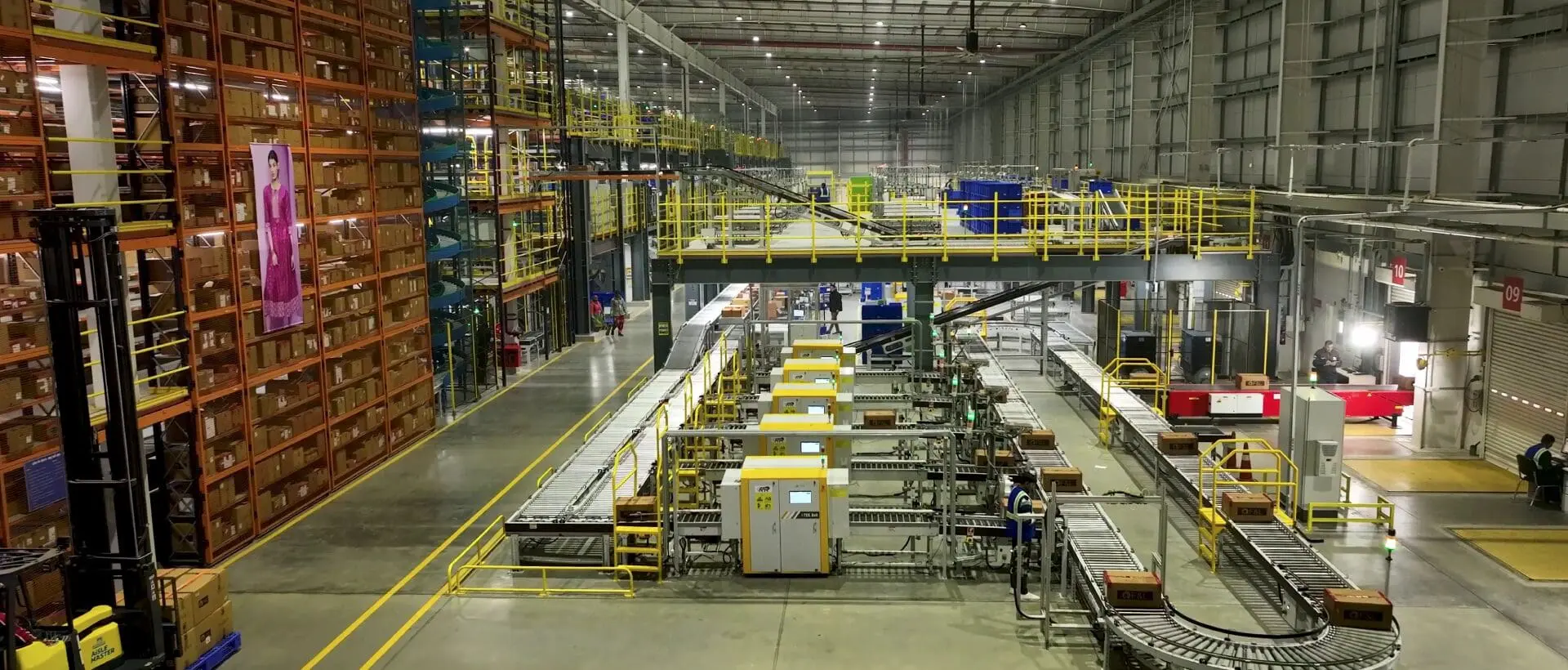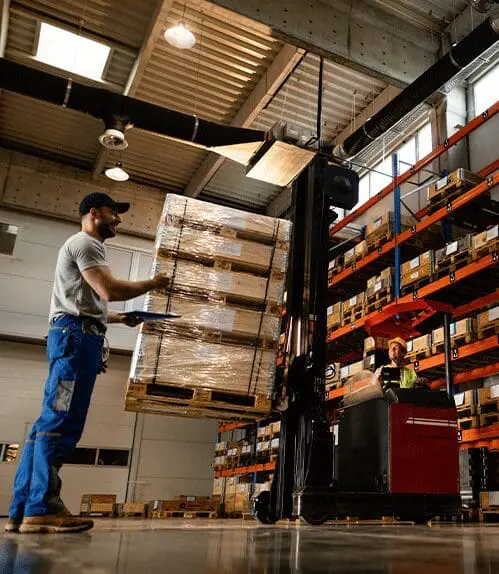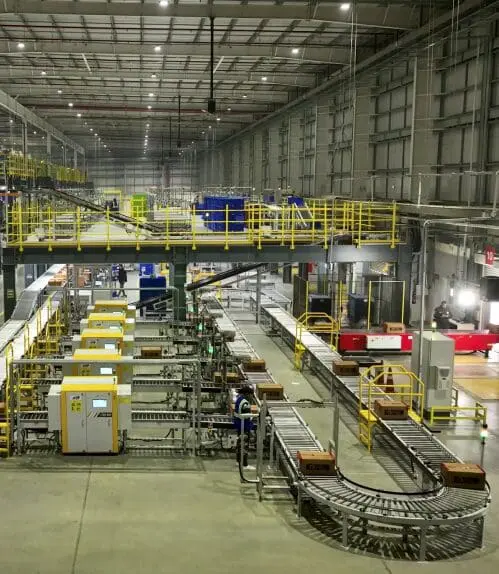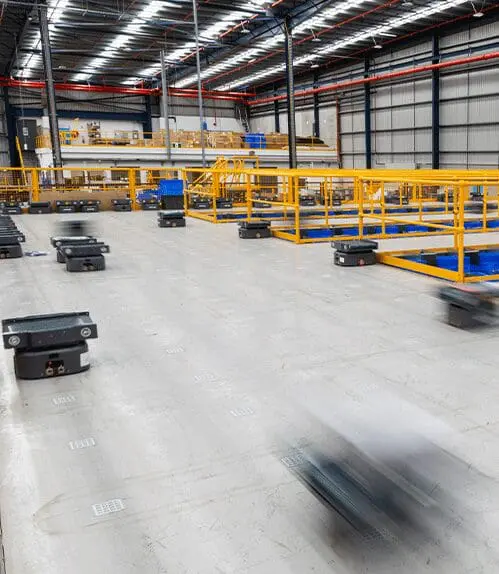Table of Contents
The Evolution of Automation in Warehousing and Logistics
Fixed and Flexible Automation technologies has revolutionized the core of automation, the operational landscape of warehousing and logistics, fundamentally shifting how businesses manage production, assembly, and distribution tasks.
Fixed Automation: Streamlining High-Volume Processes
Fixed automation systems are custom-built to execute repetitive tasks efficiently within high-volume production environments. However, warehouse operations still face significant challenges, including the high cost of installing and maintaining these automation systems, the complexity of integrating new technologies with existing infrastructure, and the potential for system failures that can disrupt operations.
Additionally, the reliance on automation can lead to a reduction in workforce flexibility and present difficulties in managing and adapting to sudden changes in production demands or supply chain disruptions.
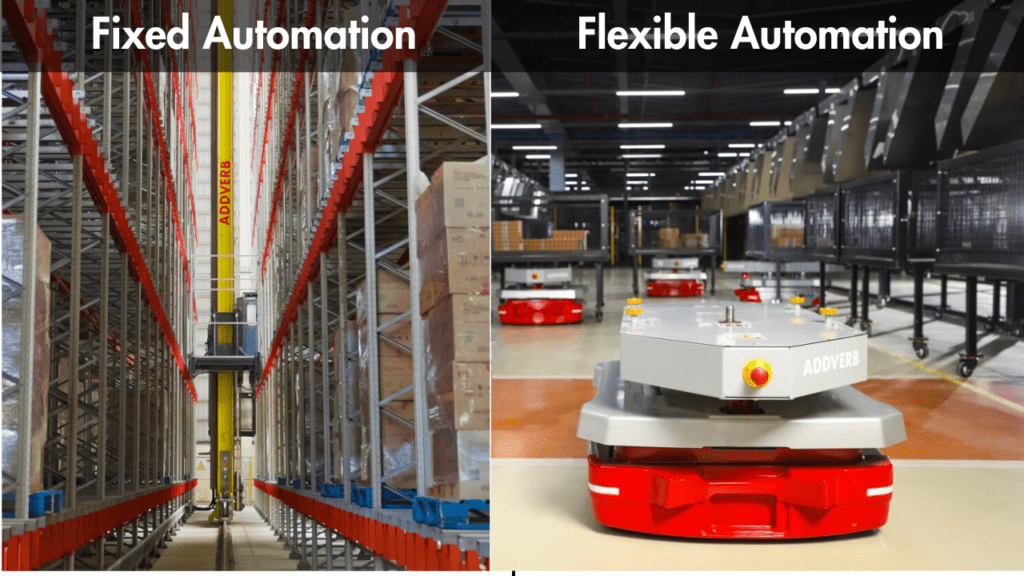
Flexible Automation: Adapting to Dynamic Environments
Flexible automation is designed with versatility in mind, capable of handling various tasks through quick reprogramming or physical reconfiguration, making it ideal for industries experiencing frequent shifts in product types or production schedules. This adaptability also improves the scalability of operations, allowing companies to easily expand their production capabilities to meet changing market demands without compromising on performance or efficiency.
These systems are engineered for speed, consistency, and long-term durability, operating under pre-defined settings without the need for frequent adjustments, thereby enhancing efficiency and optimizing operations.
Addverb: Leading the Fixed and Flexible Automation Revolution
Addverb offers solutions that embody both fixed and flexible automation. In the realm of fixed automation, Addverb utilizes Automated Storage and Retrieval Systems (ASRS), designed for precise storage and retrieval of carton and pallet loads. ASRS optimizes vertical space utilization, enabling high-density storage. These systems utilize specific racking structures, ensuring maximum throughput accuracy and operational safety. On the other hand, Addverb’s flexible automation is exemplified by “Mobile Robots,” which come with built-in sensors such as LiDARs, cameras, nodes, and other components that allow them to navigate their surroundings and engage with various objects and individuals. Their purpose is to work alongside humans, tackling physically demanding and repetitive tasks involving the movement of materials. By doing so, they considerably enhance the efficiency and productivity of fulfilment operations.
Applications Across Industries
The application of fixed and flexible automation brings tailored benefits to distinct distribution verticals, enhancing productivity and operational efficiency:
- E-commerce: E-commerce operations thrive on flexible automation due to their need to manage a diverse and ever-changing inventory. Flexible systems can quickly adjust to new product sizes, packaging needs, and sorting criteria, essential for businesses that must respond dynamically to consumer purchasing trends. Statistics show that the adoption of such systems can reduce order processing times by up to 50%, significantly boosting throughput during high-demand periods such as sales or holidays.
- Pharmaceuticals: In the pharmaceutical industry, fixed automation provides the control and precision necessary for adhering to strict regulatory standards. These systems ensure that every product batch is consistent, safe, and traceable, from assembly through packaging and labeling. Automation in this sector has been reported to enhance production efficiency by as much as 30%, while also improving compliance with stringent quality controls, reducing the risk of human error.
- Food and Beverages: In the dynamic landscape of food and beverages, a strategic blend of fixed and flexible automation drives efficiency and innovation. Fixed automation excels in high-speed processes like bottling and canning, boosting production rates by up to 70%. Meanwhile, flexible automation steps in for seasonal or specialty products, facilitating quick switches between packaging and ingredients. This dual approach not only meets consumer demands for variety but also slashes waste by about 20% through swift adaptation to market preferences.
- Automotive: In the automotive sector, both fixed and flexible automation play crucial roles. Fixed automation ensures precision and scalability in producing standardized components like engine parts and chassis assembly, boosting production efficiency by up to 40% and reducing errors significantly. Meanwhile, flexible automation enables customization for various car models and accommodates innovations such as electric vehicle components. This adaptability supports swift updates to assembly lines, reducing time-to-market for new vehicles by 25%.
These advancements in automation technology, whether fixed or flexible, are crucial in meeting the growing demands of modern industry, enabling companies to maintain high standards of quality and efficiency while adapting to market changes and consumer expectations.
The Synergy Between Fixed and Flexible Automation
The fusion of fixed and flexible automation systems in a single operation not only boosts efficiency and scalability but also maximizes existing infrastructure to create a highly resilient and versatile environment. This holistic approach ensures sustained high throughput and adaptability without the need for extensive overhauls or investments. For instance, warehouses can seamlessly integrate fixed automation systems such as conveyor belts, high-density storage racking, and flow racks, already in place for managing the consistent movement and storage of top-selling products. These systems, optimized for speed and efficiency, offer a seamless pathway for high-volume items with minimal handling variability.
In contrast, flexible automation solutions from Addverb, such as their autonomous mobile robots (AMRs) and modular robotic systems, can complement this existing setup to handle more complex or variable tasks. For products like seasonal fashion items or rapidly evolving tech gadgets, prone to fluctuating demand and frequent changes in specifications, flexible systems can swiftly adapt. They can dynamically adjust routes based on real-time data, reconfigure setups for diverse packaging needs, or transition between tasks with minimal downtime. Moreover, integrating these systems can expand the capabilities of existing infrastructure.
For example, Addverb’s AMRs can transport materials between different facility sections served by fixed automation systems like conveyors, creating a cohesive and interconnected operation. This integration optimizes space utilization and operational speed, mitigating bottlenecks and enhancing overall productivity.
The seamless blend of fixed and flexible automation enables uninterrupted operation during updates or maintenance, minimizing downtime and ensuring supply chain continuity. This dual approach allows warehouses to achieve both high-efficiency production and the agility to adapt to market changes, securing a competitive edge. As the industrial landscape evolves, the strategic integration of fixed and flexible automation becomes increasingly vital for maintaining competitive advantages. Addverb’s commitment to excellence and innovation in automation makes it an ideal partner for optimizing operational dynamics, driving improved efficiency, scalability, and sustainable growth amidst evolving market demands and technological advancements.

If you are interested to Automate your warehouse, Contact our experts today!
